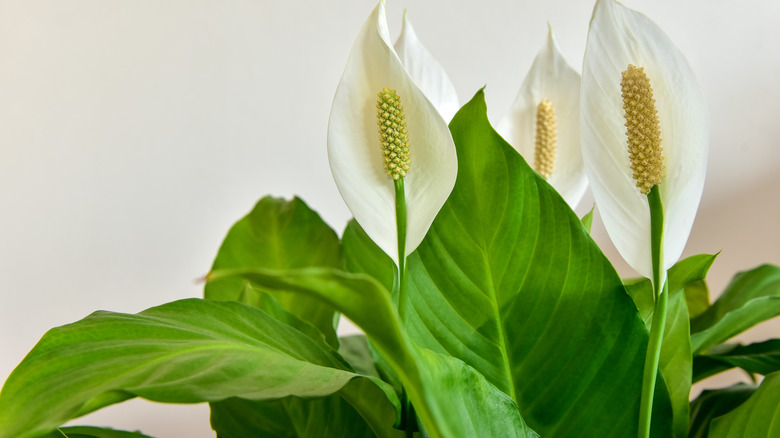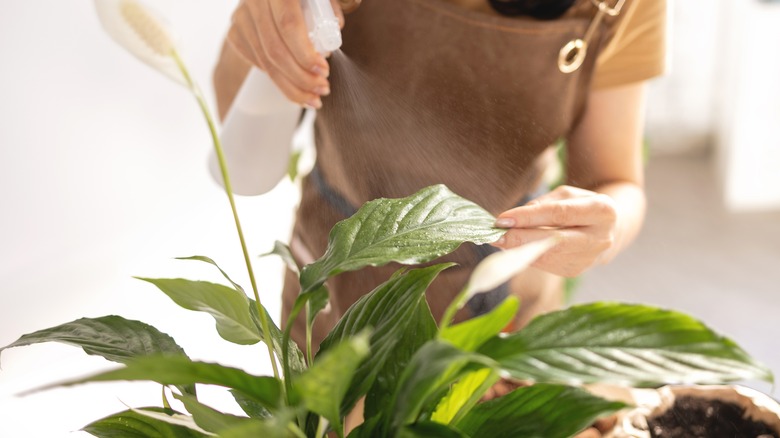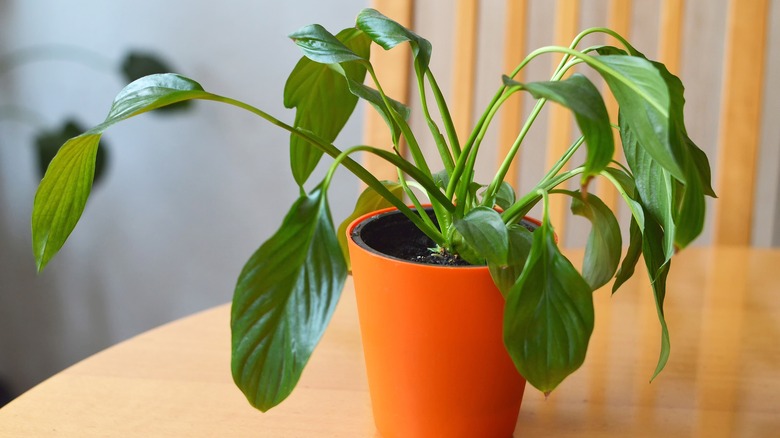Why Pinterest Recommends Against Growing Peace Lilies As Houseplants
While peace lilies are typically considered to be easy to care for houseplants, Pinterest suggests a few reasons they may not be as simple as you think. When peace lilies are not given enough water, their leaves will droop down dramatically. A thorough drink can remedy this, but if it continues to happen your plant could suffer over time. Even if you think you are properly watering your plant when it starts to droop, if the water doesn't reach the roots your plant will continue to wilt. Eventually, the leaves may begin to turn brown along the edges.
Peace lilies generally don't need much attention, which is why it can be easy to forget to water them until it's too late. This is part of why Pinterest suggests that these plants may not be the best choice for a houseplant. Additionally, peace lilies may respond poorly to chemicals in tap water, and can struggle in locations with varying temperatures, such as beside a heater or a drafty window. Though Pinterest doesn't recommend this houseplant because of these issues, you can successfully grow an indoor peace lily plant by providing it with the right amount of water and growing conditions, making it a gorgeous addition to your home.
How to properly water peace lilies
The best method for watering peace lilies is to give them a good drink when the top inch of soil is dry. If the dirt starts to dry out too much, your gorgeous plant will begin to wilt or droop. However, this can also happen when peace lilies are overwatered. Depending on where your plant is kept, how much sunlight it receives, and the temperature in your home, your peace lily will have its own water requirements. This is why it's crucial to check your plant's soil to see if it's ready to be watered. Otherwise, you may under or overwater it by accident.
For those who have trouble knowing if the soil is damp enough, investing in a moisture meter could help. If you're giving the plant the right amount of water and it's still drooping or has brown leaves, your tap water may contain fluoride and chlorine. Before watering your plant, leave a glass of water out for a few hours to let the chemicals dissipate. You may also try using filtered water or collected rainwater.
Caring for a drooping peace lily
Drooping is a telltale sign that your peace lily is in trouble and if your plant has stopped standing tall, start to help it by feeling the soil. If the dirt feels extremely dry, ensure that the water reaches the plant's roots by pouring it directly into the pot until the liquid starts dripping out of the drainage holes in the base. In some cases, the water may start to come out of the pot as soon as you start watering, which indicates that the soil has been dry for some time and is having trouble retaining the water. Continue giving your peace lily water until it doesn't leak out as quickly and the pot has become heavier. This will let you know that the soil is moist, and you can wait for it to get slightly dry at the top before watering again.
Overwatered peace lilies will need to go without a drink until the soil has begun to dry. For those that have ruled out over or underwatering as the cause of the drooping, check that your plant isn't near any vents and that it's kept in an area with some humidity. These plants prefer to grow in a steady environment with temperatures between 68 and 85 degrees Fahrenheit, so it's important to keep them in a spot where the temperature doesn't fluctuate too much.


